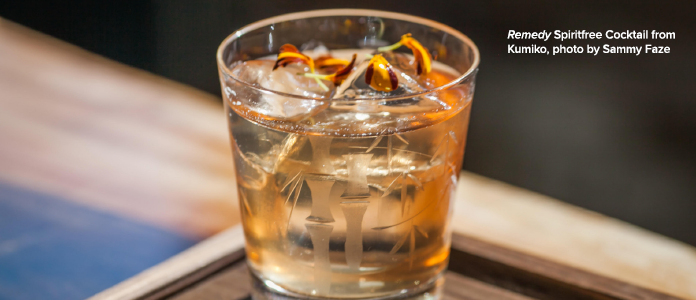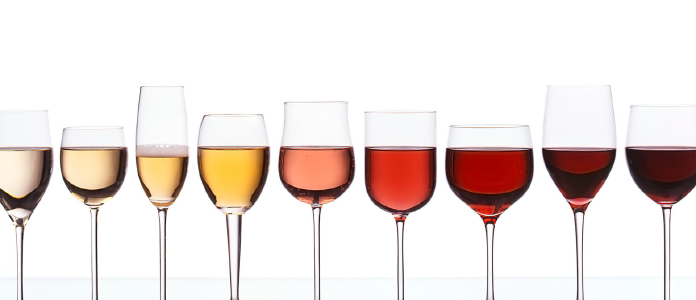A TOAST TO SPRING!
Let’s raise a glass to all that we love about spring, from warmer days and blooming flowers to lakefront strolls and neighborhood farmers markets! But what exactly do you want in your glass? This month, we’re going to talk about wine, beer, spirits and some very inventive alcohol-free libations.

ON THE ROAD
From the Bourbon Trail to the Cape Winelands
Visiting a craft brewery, vineyard estate or distillery offers a great way to experience local flavors and culture. They can be destinations unto themselves or a one-day excursion to enhance your vacation. From closer-to-home to the Southern Hemisphere, here are three beer, wine and spirit experiences worth exploring
Grand Rapids—Beer City, USA: Close enough for a weekend getaway, Grand Rapids, Michigan was once again named as the #1 Best Beer City by USA Today in their most recent 10 Best Reader’s Choice Awards. This is thanks largely to the presence of Founders Brewing Co., a local favorite that opened in 1997. Beyond Founders, other notable breweries include the European-inspired Brewery Vivant, the world’s first LEED certified microbrewery. If you have more time to explore, Grand Rapids’ official “Beer City Ale Trail” lists more than 80 breweries throughout Southwest Michigan including several in the inviting lakeside resort communities of Saugatuck and South Haven.
Kentucky Bourbon Trail: Winding its way from Louisville to Lexington through the rolling hills and emerald green pastures of Bluegrass Country, the Kentucky Bourbon Trail® encompasses 42 distilleries including Angel’s Envy, Maker’s Mark, Woodford Reserve, Whiskey Thief, and Boundary Oak. Located in the Frazier Kentucky History Museum in downtown Louisville, the Kentucky Bourbon Trail® Welcome Center is a great place to start your journey—with guides, maps and other travel-planning resources.
The Cape Winelands, South Africa: From the vibrant, cosmopolitan city of Cape Town to the wildly beautiful Cape of Good Hope, South Africa’s Western Cape is also home to one of the world’s premier wine-producing regions: The Cape Winelands. Tracing their viticultural history to 17th-century Dutch settlers and French Huguenots, the region’s vineyard estates produce a wide variety of fine wines including Chenin Blanc and Chardonnay. Powerful, elegant reds include Shiraz, Cabernet Sauvignon and Pinotage—South Africa’s signature red wine grape, a cross between Pinot Noir and Cinsaut rarely found anywhere else in the world.

WHEN THE SPIRIT DOESN’T MOVE YOU
Julia Momosé, James Beard award-winner and owner of Kumiko, issued a manifesto in 2017 wherein she advocates for the term “spiritfree” instead of “mocktail”—and champions for nonalcoholic cocktails to become a part of more beverage menus. Practicing what she preaches, her West Loop Japanese dining bar offers sophisticated Spiritfrees like the Uméboshi Swizzle featuring shiso-pickled umé, brown rice vinegar, lemon and Japanese seven spice over crushed ice.
Julia’s elegant alcohol-free drinks are also featured at the two-Michelin-starred Chicago restaurant Oriole. They offer three pairing options including Spiritfrees created to complement Executive Chef Noah Sandoval’s award-winning tasting menus.
Here are a few other places with unique alcohol-free libations:
Nobody’s Darling | 1744 W Balmoral Ave, Chicago: This LGBTQ-friendly Black-owned bar offers elevated zero-proof cocktails prepared with unique ingredients like Avec Hibiscus + Pomegranate and Lyre’s Italian Orange.
Bokeh | 4716 N Kedzie Ave, Chicago: The tempting alcohol-free drinks at this stylish Albany Park bar include the Bosphorus Strait, made with Turkish coffee, tagine syrup and condensed milk.
Temperance Beer Co. | 2000 Dempster St, Evanston: Introduced earlier this year, Near Tears is the brewery’s first near beer. Double dry-hopped with a tangy, dry brightness, it clocks in at just 0.3% ABV. It’s a seasonal offering, so ask about it on your next visit to Evanston’s first and oldest brewery.

THE GRAP-EST STORY EVER TOLD
Until the devastating Phylloxera plague of 1867, Carménère was hailed as one of the noble grapes of Bordeaux, along with Merlot, Cabernet Sauvignon, Malbec, Cabernet Franc and Petit Verdot. While these five other varieties survived, Carménère vines were especially susceptible, and it was believed that the species became extinct following the plague.
But nobody knew that Carménère vines were thriving in Chile—brought from France in the 1850’s and unwittingly mistaken for Merlot. Over the following century, Chilean winemakers noticed that some of their Merlot vines (the clandestine Carménère!) turned color much earlier than others (the true Merlot vines brought from Europe after the 1860’s). Moreover, the Merlot produced in Chile (actually a blend of Carménère and Merlot) was markedly different from Merlot wines produced elsewhere. In a stroke of marketing genius, Chilean Merlot became “a thing,” famed for its particularly fruity, spicy aromas and gentle, rounded tannins.
All of this changed in November 1994 when a visiting French ampelographer spotted some different vines in a Merlot vineyard in Chile’s Maipo Valley. Noting the uniquely twisted stamens, he identified the vines as the thought-to-be extinct Carménère variety. Subsequent DNA tests proved him right and today you can find bottles of Carménère at your local wine store and online.



